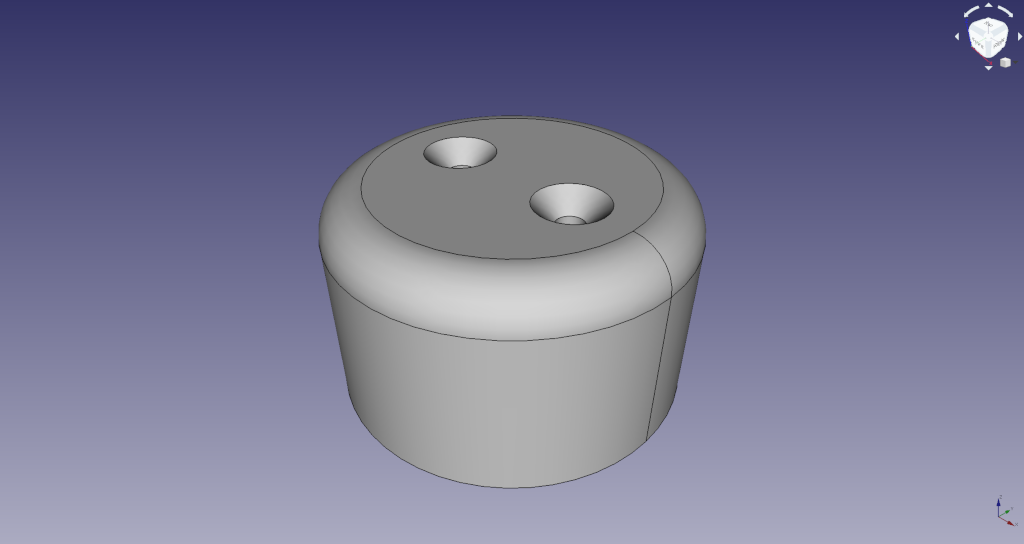Tag Climbing
Tag Climbing RSS 2.0 FeedRecalibrate your beastmaker Motherboard
beastmaker Climbing Motherboard
Last week I have been using three different beastmaker Motherboards. Once at home, once at my lead climbing gym Magic Mountain and once at a local bouldering gym südbloc. My weight might be jumping from day to day a little bit and also between morning and evening, but the gap was noticeable. This was no surpise anymore after I found this Grippy post on Instagram. I am writing in this post a small tutorial based on this post to recalibrate your beastmaker Motherboards loadcell. Just in the case you may do not have Instagram and also to spread the word for this small issue.
Grippy Pull Down Test - beastmaker climbing grip strength test
beastmaker Climbing Motherboard
As I bought my beastmaker Motherboard setup I was a bit upset. I did expect from the Motherboard and Grippy App somekind of digital tools to test my finger grip strength and improve it by a training plan or workout. The part with the workouts was fine. There existed a few predefined by big names of the climbing community and there was the possibility to add your owns. Unfortunately there didn't exist precise finger strengths tests as you may know them from Lattice Trainging for example. Until I opened the Grippy App yesterday.
Measuring the beastmaker 1000 hold depth
On the offical beastmaker 1000 page is no information about the real depth or size of the holds. I measured the real hold size with a measuring stick.
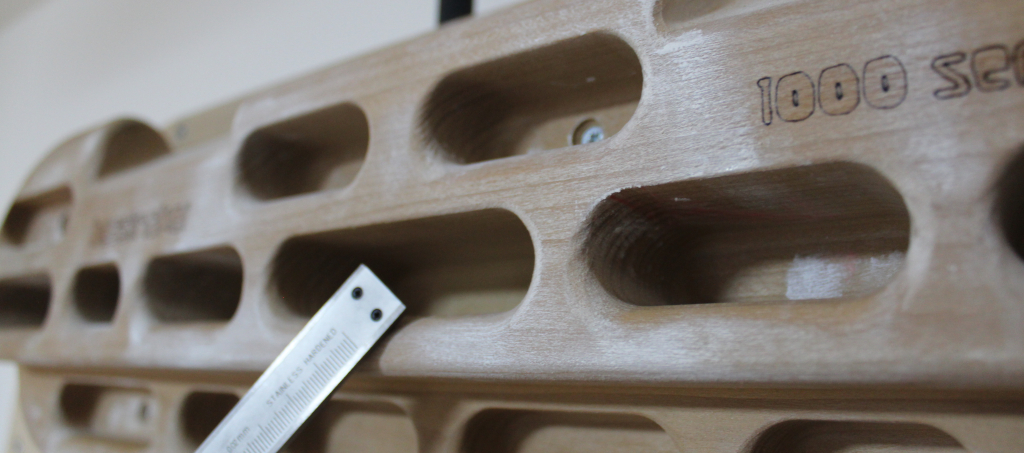
Interpret a beastmaker Motherboard freehang export with D3
beastmaker Climbing D3 Motherboard Time Series
In the Grippy App you are able to do freehangs and export those raw data from the beastmaker Motherboard in the CSV format. In this post I would like to go through the format and visualize the data with D3 in a time series diagram.
A beastmaker backboard and training station
In this post I would like to show a beastmaker backboard and training station that I build for a friend. I will tell some words about the construction, the climbing hold setup and the hangboard training app used on this board.
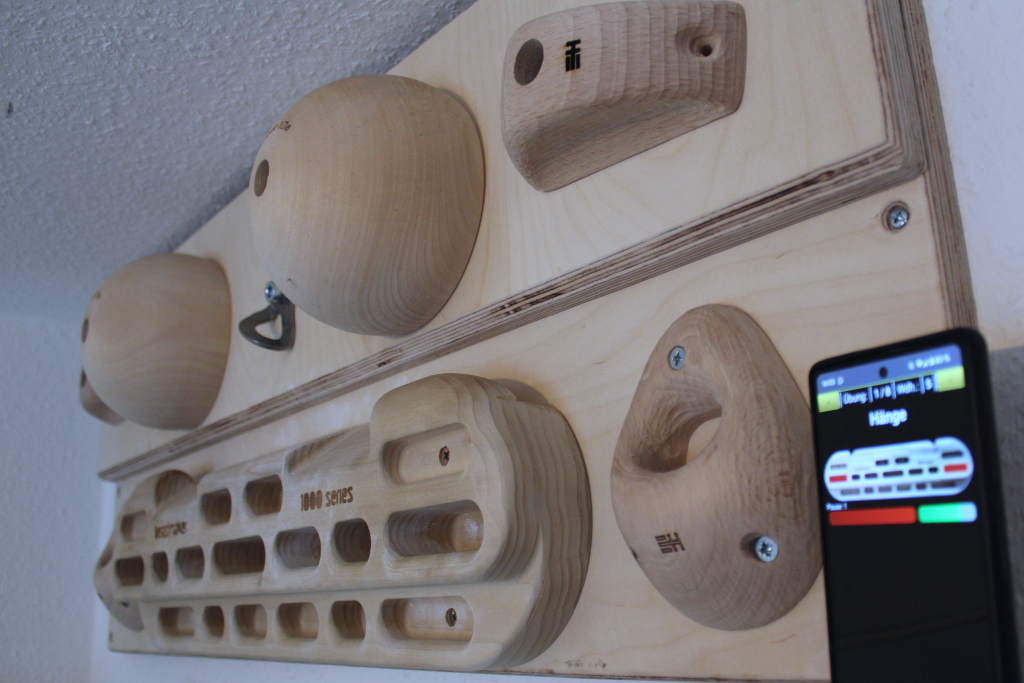
Beasty 5a+ A beastmaker workout slightly harder than Beasty 5a
I started fingerboarding with my beastmaker Motherboard setup a few month ago and I didn't thought to be that weak. It took me three tries until I was able to complete the easiest workout Beasty 5a without any mistake. Afterwards I was motivated to go on with the second easiest workout Beasty 5b. I managed the 25° Sloper set and also the 3 Finger pocket 30 mm set, but both with mistakes. But the Deep 2-finger pocket 50 mm wasn't even possible after all.
My home climbing wall upgrade
Since two years now I am climbing on my home climbing wall. On the initial setup I left some space for more holds. Those free corners have been filled up in the last months.
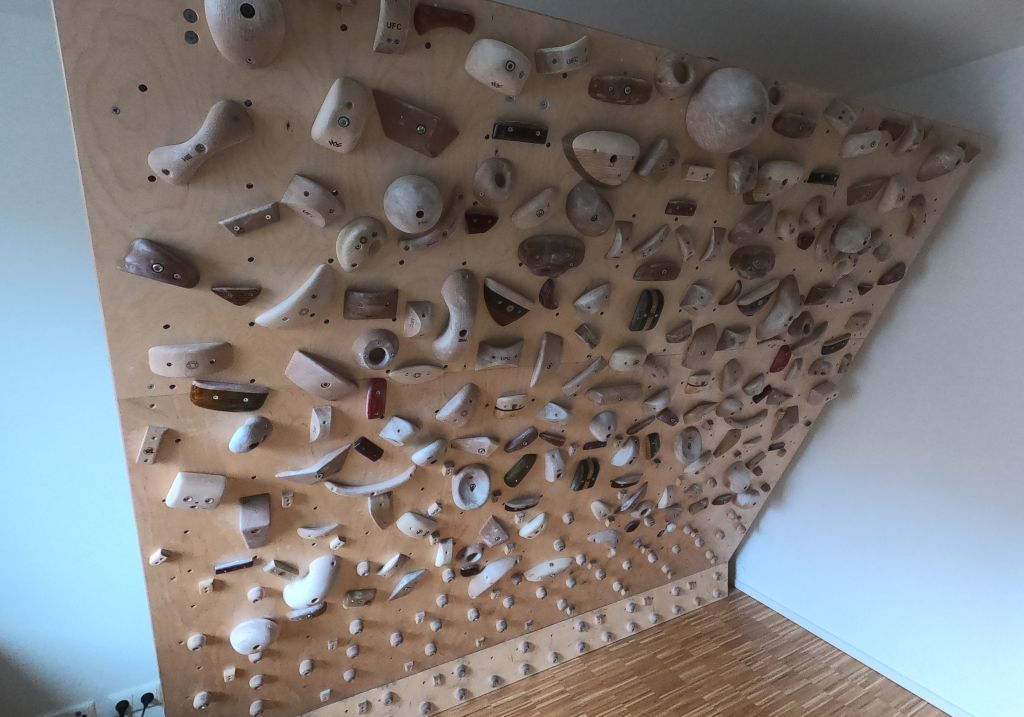
Marking routes on a home climbing wall with magnets
A few weeks ago a friend visited me for a session on my adjustable home climbing wall. Not only for me, especially for my friends it is sometimes difficult to remember the hand and particularly the footholds of a certain route on my home climbing wall. Unfortunately my home climbing wall has no LED system. But my friend had an alternative idea.
My Beastmaker Motherboard setup
beastmaker Climbing Motherboard
Some weeks ago on the October 29th I joined a SmartBoard training in my local gym Magic Mountain by Jörg Helfrich. Result of the evaluation has been that my upper arms are too weak and I could improve my finger strength.
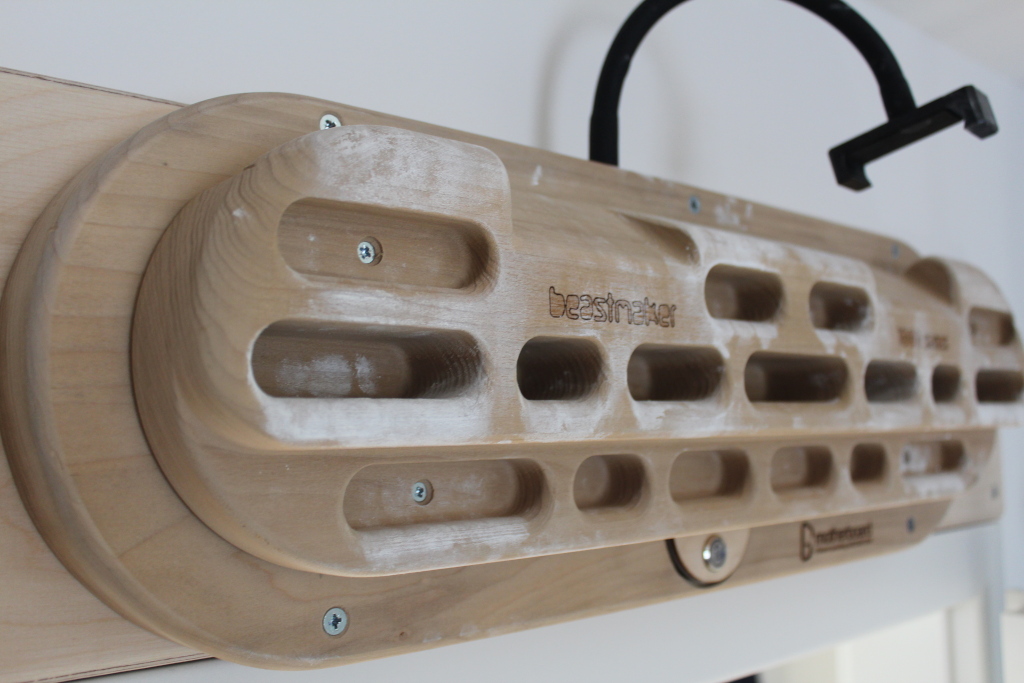
My adjustable home climbing wall
In the following post I want to present my adjustable home climbing wall. It may help other people by decision making, but it won't cover construction plans or similar. Everything just for boast.
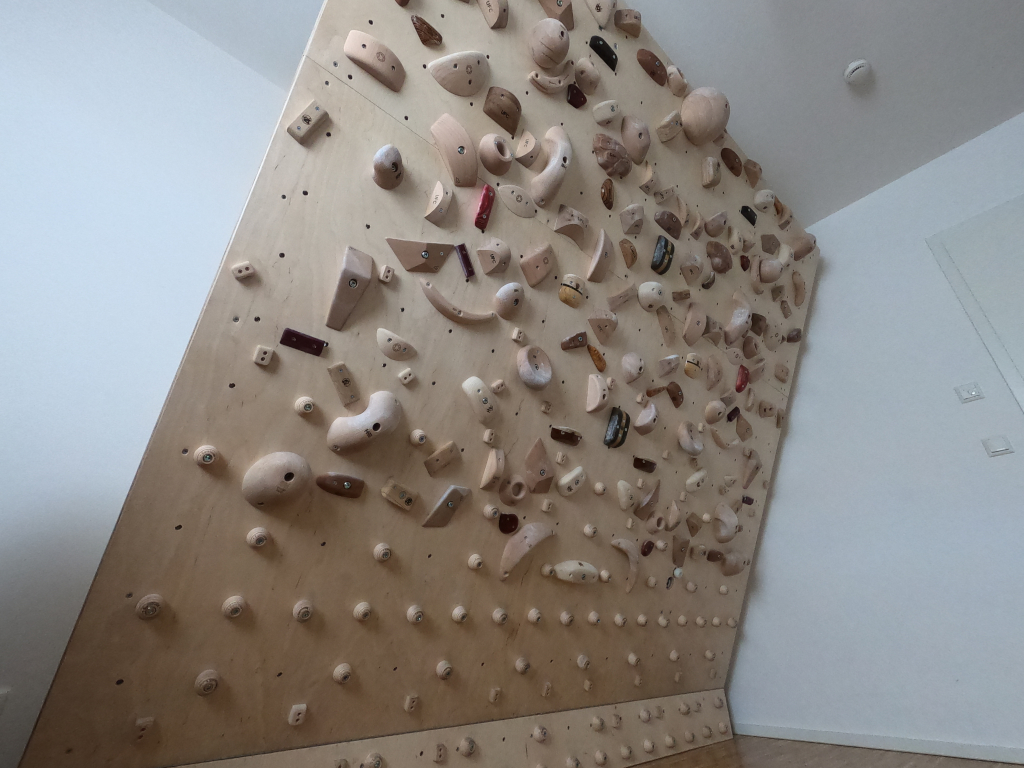
Constructing a wooden climbing foothold with FreeCAD
A small tutorial to document my steps with FreeCAD to construct a simple wooden climbing foothold.
